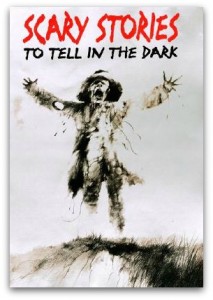Where some of your favorite scary stories come from.

The Big Toe
A starving boy who finds a toe one day and makes the mistake of eating it. The following night, its ghostly owner comes looking for him. The tale has been widely circulated throughout the southeastern United States for decades. Another version, which involves a man who steals his dead wife’s golden prosthetic arm from her grave, dates back hundreds of years. It’s been traced to Germany and England. The infamous Grimm brothers made note of it in the early 19th century. Author Mark Twain also loved to tell his version during public speaking appearances. He would conclude the tale by jumping and screaming at any young woman foolish enough to sit in the front row.
The Girl Who Stood on a Grave
A young girl accepts a dare to go to a cemetery late one night and plunge a knife into a haunted grave. When she accidentally drives the knife through her own dress, she dies of fright after assuming that a ghost is tugging on it. The modern version is based on a tale widely told across America that has its origins in the UK. It dates back at least a hundred years and older variations replace the knife with a stick, a croquet stake, or a fork.
The Hearse Song
Kids love to sing this creepy tune, especially the line “the worms crawl in, the worms crawl out….” It was composed by an unknown author during World War I and was often sung by soldiers who used it to calm their nerves. Early versions, while still darkly humorous, were even grimmer than the one Schwartz included in Scary Stories. The song is part of a poetic tradition that makes light of death, dating to the Middle Ages.
The Babysitter
A babysitter is terrorized by a prank caller, only to learn that, “the call is coming from inside the house!” In some versions, the babysitter and the children she’s watching survive, in others the police arrive too late to save them. The story was adapted into a 1979 film (and a 2006 remake) titled When a Stranger Calls. Schwartz based the version he included in the first Scary Stories book on a tale he heard in Iowa in 1980. According to the folklore website Snopes, it first appeared in the early 1960s.








